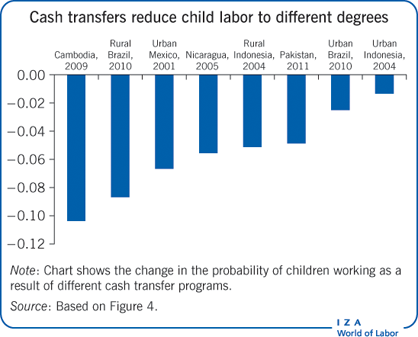Elevator pitch
Cash transfers are a popular and successful means of tackling household vulnerability and promoting human capital investment. They can also reduce child labor, especially when it is a response to household vulnerability, but their efficacy is very variable. If not properly designed, cash transfers that promote children's education can increase their economic activities in order to pay the additional costs of schooling. The efficacy of cash transfers may also be reduced if the transfers enable investment in productive assets that boost the returns to child labor. The impact of cash transfers must thus be assessed as part of the whole incentive system faced by the household.

Key findings
Pros
Cash transfers can reduce the economic vulnerability of households and increase human capital investment, especially in low-income countries with weak social protection systems.
Cash transfer programs have proven to be valuable in reducing child labor that arises in response to household vulnerability.
Adding interventions to reduce the costs of school and health care and improve their quality can increase the effectiveness of cash transfers in reducing child labor.
Cons
If invested in productive assets, cash transfers can increase household demand for child labor.
If cash transfers enable children to enroll in school, child labor might increase to support additional education costs.
Few cash transfer programs have reducing child labor as a primary objective.
In most cases, increases in school attendance are not fully matched by reductions in child labor.